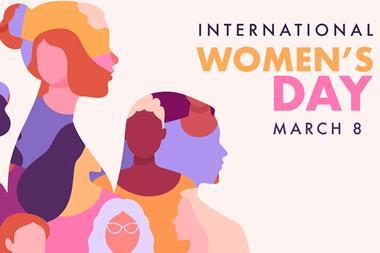In the first of her new monthly columns for Insurance Times, Kelly Ogley lays out three steps the sector should take to increase female representation in c-suites
By Kelly Ogley
When Insurance Times asked me to become a regular columnist, my immediate response was very typical of me: “Of course, what a great opportunity.”

This feeling was followed a few days later by a question – why me?
When I chatted to a colleague about this he seemed shocked at my lack of self belief. He reminded me that I’ve worked in broking for nearly 34 years, have spent 13 of those as a board member, as well as being the chief executive of a prestigious business.
To the outside world, I was seen as confident and outgoing – yet self-doubt prevailed.
When I sat down to write this first column, I decided to reflect on this and on some of my other personal experiences as a female in our industry.
Why is it that women sometimes feel this way? And what more can we do as a sector to overcome the diversity challenge that we all know we face?
I have to admit that when I joined the industry I didn’t perceive a distinction between men and women in the workplace, until I attended a leadership conference in the early 90s and quickly spotted I was the only female in the room.
A lot has improved since then, but we still face a huge problem. Women make up less than 7% of chief executives within the insurance industry, according to recently published figures from specialist employment law firm GQ Littler.
This simply has to change.
Why are there so few females in c-suite roles? There are three main reasons – and here’s what I think we need to change that.
We have come a long way and I honestly don’t think our industry has a gender bias, but that hasn’t always been the case. In the past, insurance was very much seen as a men’s club.
We have historically had fewer females progressing through the ranks, irrespective of their accomplishment and talent, and, therefore, we haven’t prepared a strong pipeline for the next c-suite positions.
Importance of role models
If women don’t see females in executive roles then there isn’t anyone for them to aspire to be, which can knock their belief and self-confidence.
Read: ‘Would they have said that if I was a man?’
Read: Aviva’s Blanc reveals sackings for inappropriate behaviour
Explore more diversity and inclusion related content here or discover other news analysis stories here
You need to know that it’s achievable. I was lucky to always have female executives to look up to and I never questioned whether my goals were achievable because I saw women at the top.
I was, however, surrounded by male leaders in my late 20s and this contributed to a feeling of imposter syndrome.
I didn’t speak and act like my male colleagues – I had the audacity to show emotion when I was passionate about something, for example – and reflecting on this, I assumed it was a sign of weakness.
Many years on, I have learnt to be comfortable in my skin – to embrace those differences and to take strength from them.
Finding a work life balance
Prevailing gender stereotypes in our society mean that women face challenges and judgement when trying to balance family life alongside the demands of a senior leadership role.
Progress is being made – such as with the ability to swap maternity allowances – but, personally, I want to maintain the role of being a mum and lead carer.
This doesn’t mean I lack ambition and it is absolutely reasonable to want to have both, but young women that I mentor still think it’s an either or.
We need businesses that can be flexible by encouraging a healthy work life balance irrespective of gender. You should never miss a play, parents’ evening or a carol concert because of a meeting.
Does this mean I did all of this? Unfortunately not.
I wasn’t a perfect mum. When in work, I felt guilty for not being with my daughter and, when I was with my daughter, I was thinking about work.
My daughter is 21 now and I still believe I was far from a perfect mum, but I am proud of the role model I have become for her and the other young women in my life.
Building self-belief
Research shows that women often strive for perfection, which can lead to a fear of making mistakes or of not being good enough.
Read: Attracting young talent ‘only going to improve’ D&I
Read: Could TikTok be the key to solving the war for talent in the insurance industry?
Explore more diversity and inclusion related content here or discover other news analysis stories here
The knock on effect of this is a lack of confidence, which can sometimes lead women to overlook opportunities. Female leadership programmes and mentoring play such a critical role here and employers need to invest much more in programmes like this.
We have some exceptional female leaders in the insurance sector.
It was fantastic to see Amanda Blanc awarded the prestigious honour of being made a Commander of the Order of the British Empire for services to business, gender equality and net zero.
Congratulations Dame Amanda – an amazing role model for females across insurance and beyond.
But gender isn’t the only diversity challenge in our industry and there is a need for increased representation across a spectrum of ethnicities.
If talented young people don’t encounter individuals who look like them, then they will continue to overlook the insurance sector, which contributes to the diversity problem.
It’s great to hear about the plethora of initiatives across many businesses in our industry to address diversity, equity and inclusion and, with the onset of new regulation, I ask will we see a step change?
I am passionate about engaging with young people from all walks of life and I shout about how sexy insurance is to attract diverse talent and become the future leaders of our distinguished and fabulous industry.

She is passionate about improving representation for women, minorities and young people in the insurance sector and has vast experience handling SME broking.View full Profile
















































No comments yet